

FURNITURE LOOKBOOK MIRRORS KALCO
ABOUT THIS BOOK
Created to inspire, we’ve assembled some of our most noteworthy predictions to help you articulate your design visions. From transitional to contemporary, Kalco Lighting and Allegri Crystal products suit a multitude of design styles.
We hope this report provides motivation as well as inspiration.
MIRRORS
Mirrors of polished copper were crafted in Mesopotamia from 4000 BCE, and in ancient Egypt from around 3000 BCE. Polished stone mirrors from Central and South America date from around 2000 BCE onwards.
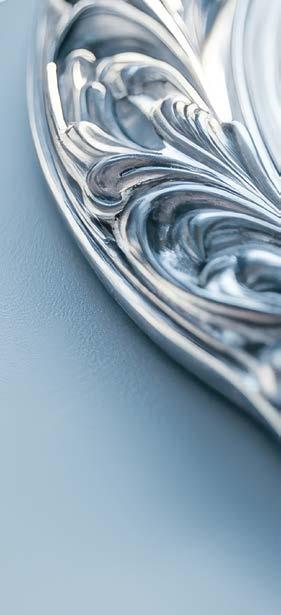

PREHISTORY OF MIRROR
The first mirrors used by humans were most likely pools of still water, or shiny stones. The requirements for making a good mirror are a surface with a very high degree of flatness (preferably but not necessarily with high reflectivity), and a surface roughness smaller than the wavelength of the light.
Mirrors have a long history, with early examples crafted from polished obsidian and metals like copper and bronze dating back to the Neolithic period. Glass mirrors emerged in the 3rd century AD, though true mass production didn’t occur until the 19th century with advancements like silvering. Mirror making techniques, including the use of mercury amalgams in Venetian mirrors, have evolved alongside scientific and industrial progress.
■ EARLY MIRRORS (BEFORE GLASS)
• Obsidian
Polished obsidian, a naturally occurring glass, was used for mirrors as early as 6000 BCE in Anatolia (modern-day Turkey).
• Metals
Mirrors were made from polished copper and bronze in Mesopotamia (around 4000 BCE) and Egypt (around 3000 BCE).
• Stone Mirrors
Stone mirrors were also crafted in Central and South America, dating back to around 2000 BCE.
• Chinese Bronze Mirrors
Bronze mirrors were also made in China around 2000 BCE.

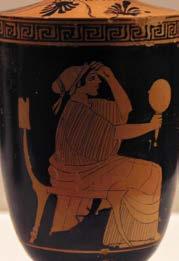
LEFT: BRONZE MIRROR, NEW KINGDOM OF EGYPT, EIGHTEENTH DYNASTY, 1540–1296 BC, CLEVELAND MUSEUM OF ART (U.S.)
RIGHT: SEATED WOMAN HOLDING A MIRROR; ANCIENT GREEK ATTIC RED-FIGURE LEKYTHOS BY THE SABOUROFF PAINTER, C. 470–460 BC, NATIONAL ARCHAEOLOGICAL MUSEUM, ATHENS (GREECE)
■ THE RISE OF GLASS MIRRORS
• Early Roman Mirrors
The first known glass mirrors appeared in the 3rd century AD, consisting of small, reflective metal surfaces coated with glass.
• Venetian Mirrors
Venetian mirrors, originating in 16th-century Venice, were made using a mercury amalgam to coat glass.
• Industrialization
The 19th century saw advancements in mirror making, including the silvering process by Justus von Liebig in 1835, which made mirrors more affordable and accessible.
■ KEY MILESTONES

• 1835: Justus von Liebig’s silvering process revolutionized mirror making by allowing for silver to be deposited on glass through a chemical reaction.
• 19th Century: The Industrial Revolution led to mass production of mirrors, making them a common household item.
• Modern Mirrors: Today, mirrors are typically made by applying a thin layer of metal (often silver) to the back of a glass plate.
AN 18TH CENTURY VERMEIL MIRROR IN THE MUSÉE DES ARTS DÉCORATIFS, STRASBOURG
FEATURES:
• TRUE BRASS FINISH
• DAZZLING DICHROIC GLASS ROUNDS
• 36-INCH DIAMETER

DETAIL VIEW

COLORWAYS
SHOWN: 803505 - D: 36” H: 40” E: 3”, (2) DICHROIC GLASS PANELS
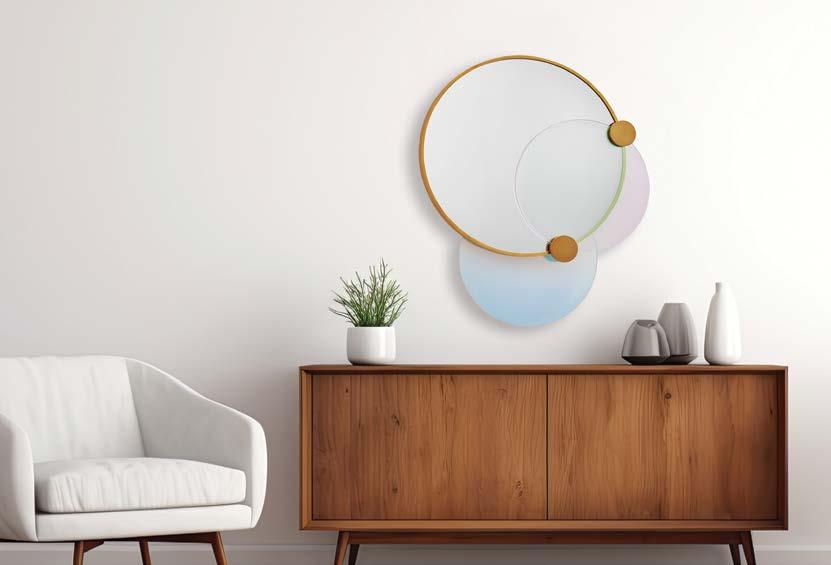
FEATURES:
• HAND-CARVED COCONUT SHELL
• MATTE WHITE FINISH

DETAIL VIEW

COCCO
SHOWN: 803605 - 31” MIRROR, L: 31 W: 31 E:3

FEATURES:
• HANDCRAFTED METAL
• OXIDIZED GOLD LEAF FINISH

DETAIL VIEW
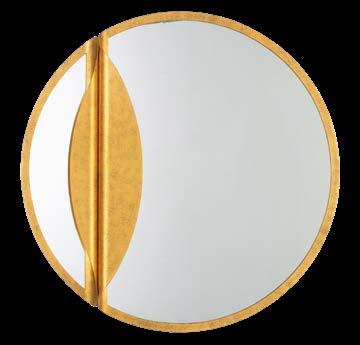
DIVISIO
SHOWN: 803905 - 30” MIRROR, L: 30 W: 30 E: 2 7/8
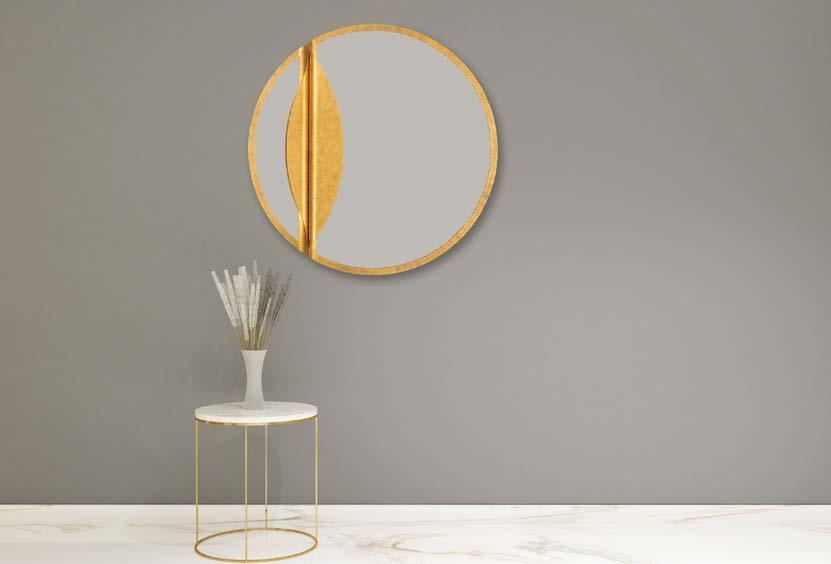
FEATURES:
• HAND-WRAPPED FINE JUTE ROPE
• STEEL
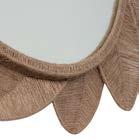
DETAIL VIEW

FOGLI
SHOWN: 804105 - FOGLIE MIRROR, 40” MIRROR, L: 40 W: 40 E: 2

FEATURES:
• NATURAL CAPIZ SHELL
• FINISHED IN A PEARLIZED ANTIQUE BRASS
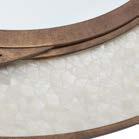
DETAIL VIEW
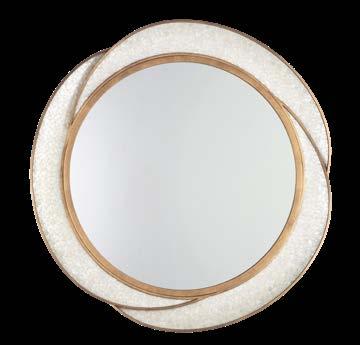
SHOWN: 803805 - 36” MIRROR, L: 36 W: 36 E: 3

FEATURES:
• HAND-CARVED MAHOGANY WOOD
• CHOCOLATE STAINED SURFACE
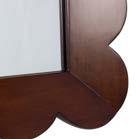

SHOWN: 804305 - 40” MAHOGANY MIRROR, L: 40” W: 30” E: 4”
DETAIL VIEW
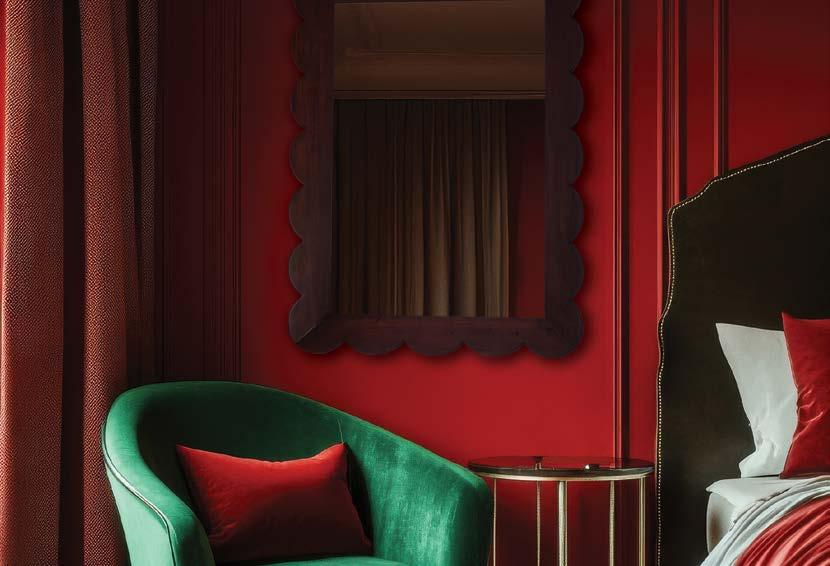
We have been crafting, designing and thinking about illumination for almost 40 years. Our legacy as “Masters of Light” has given us a deep understanding of what inspires people. Our dedication to Design, Service and Quality is the foundation of our success and we hope you’ll take a deeper look into our world and everything we offer.
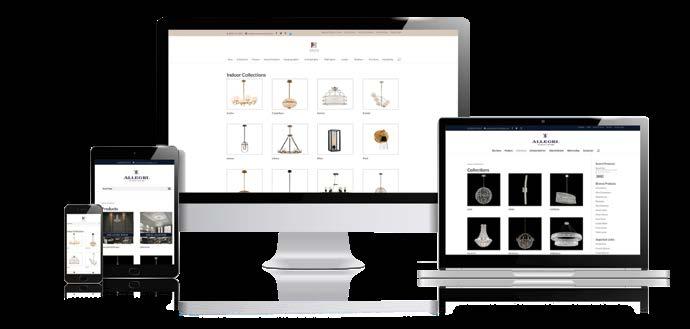
EXPLORE OUR VIRTUAL SHOWROOM
We’re bringing our showroom to you! See our lighting products in 3D. bit.ly/kalco_showroom

